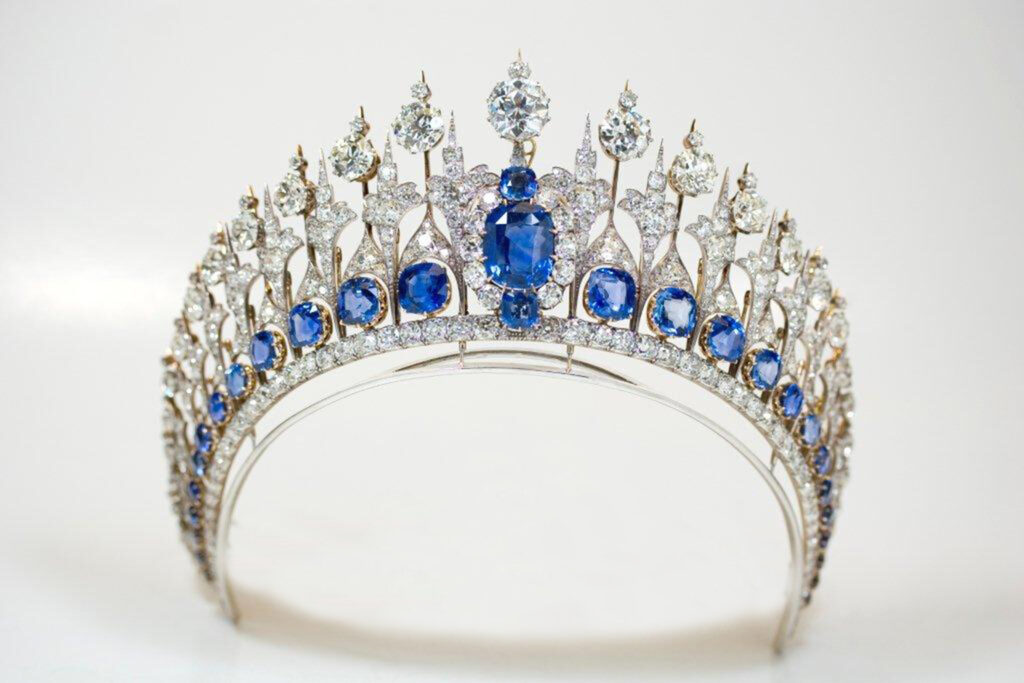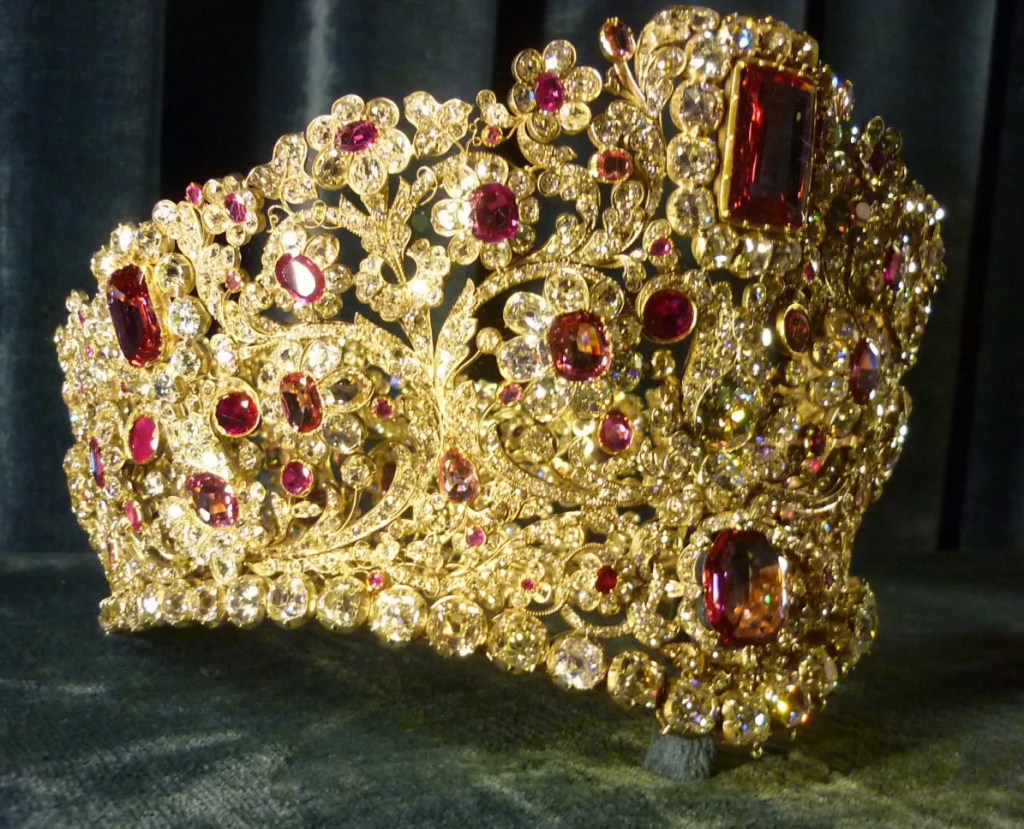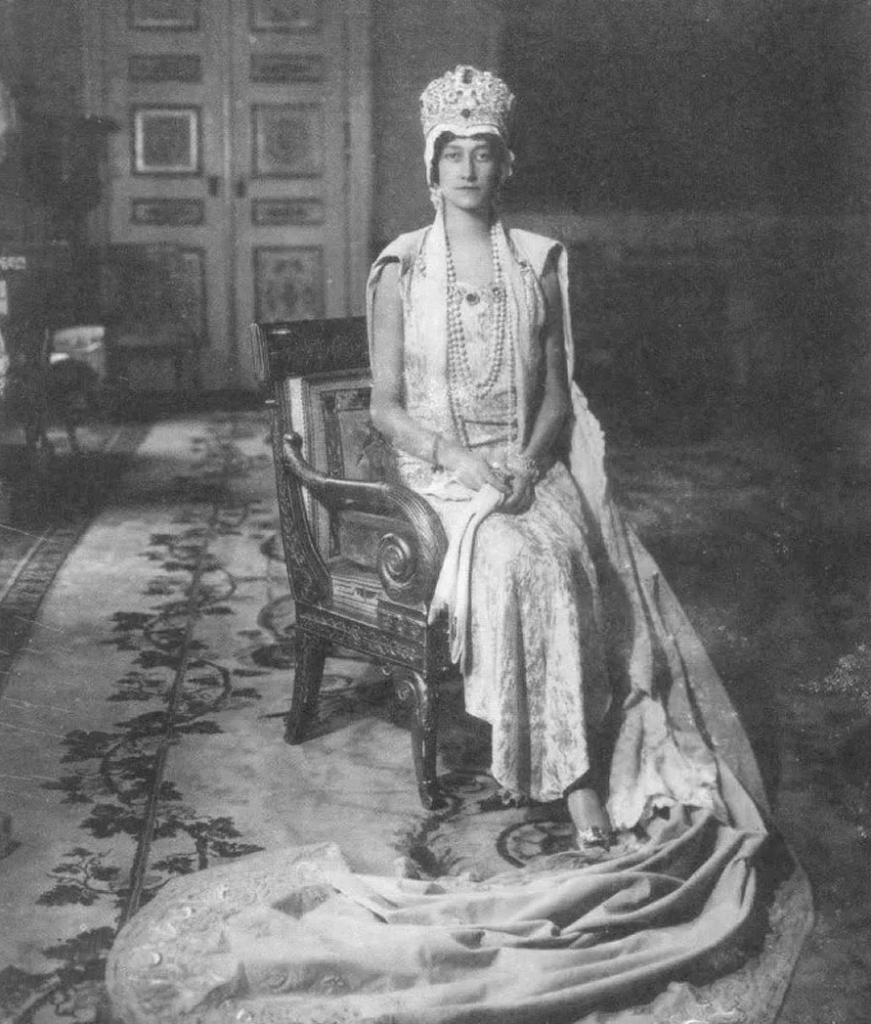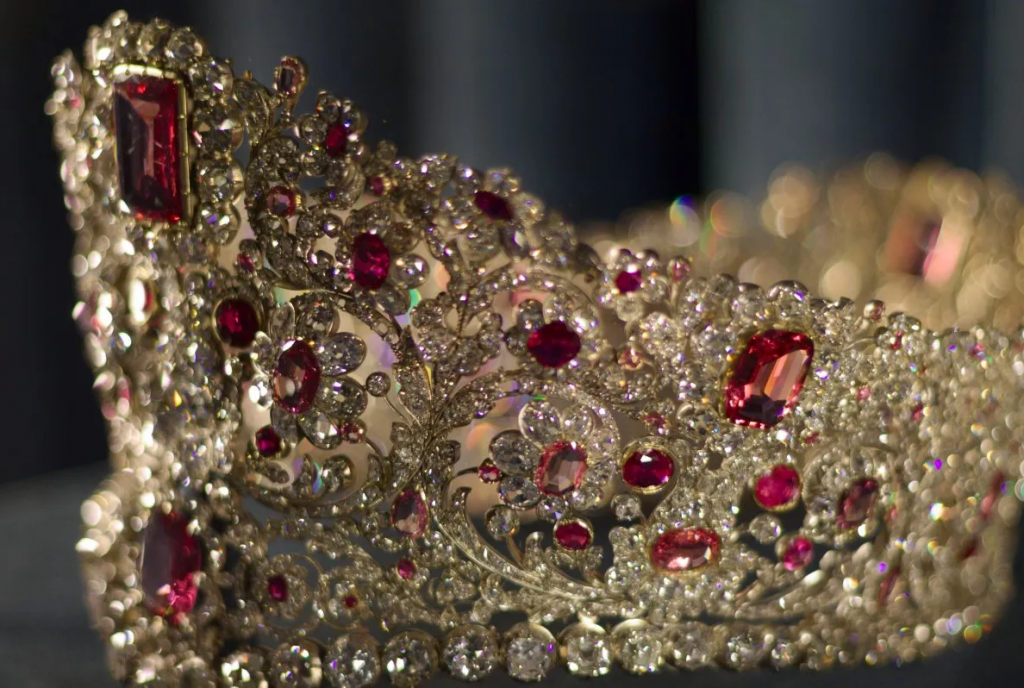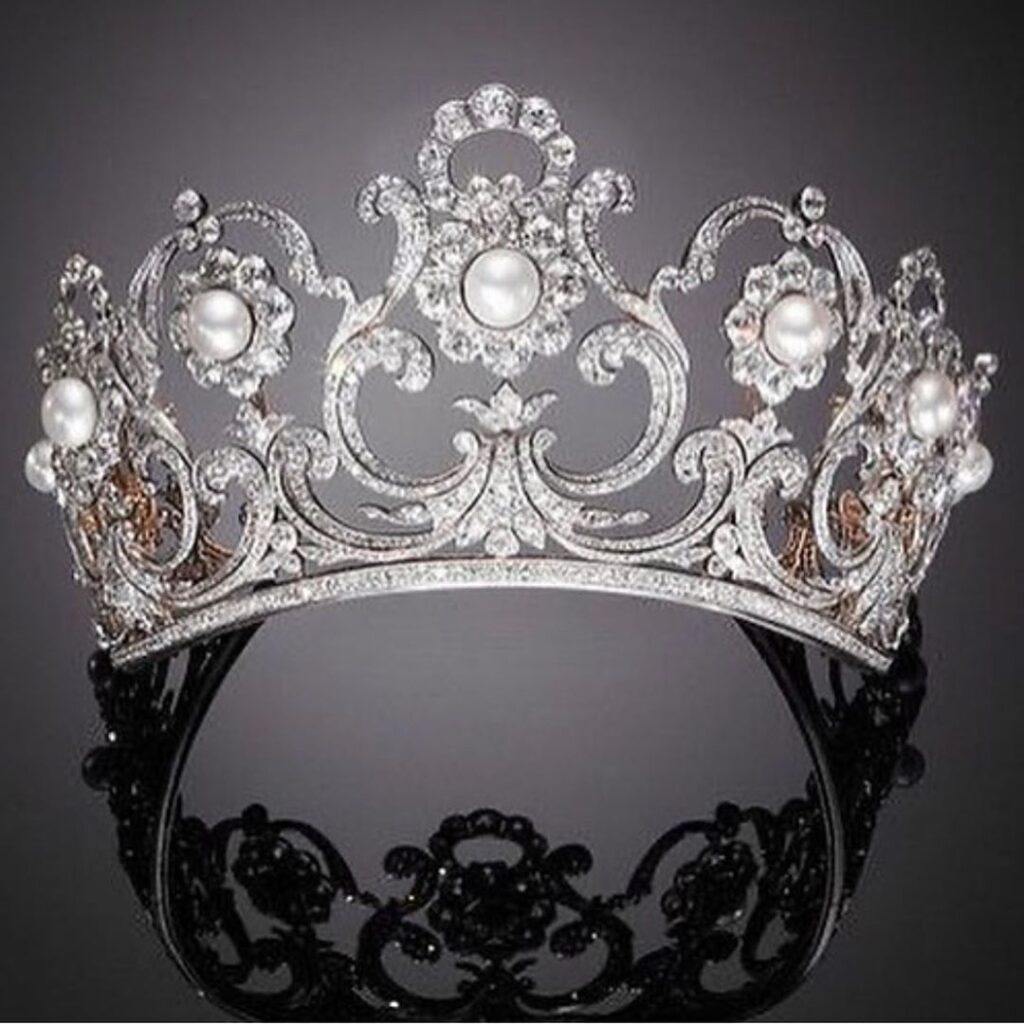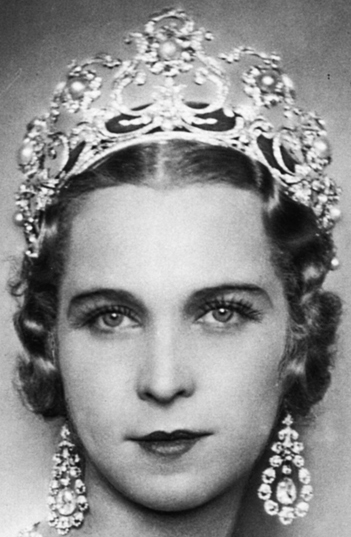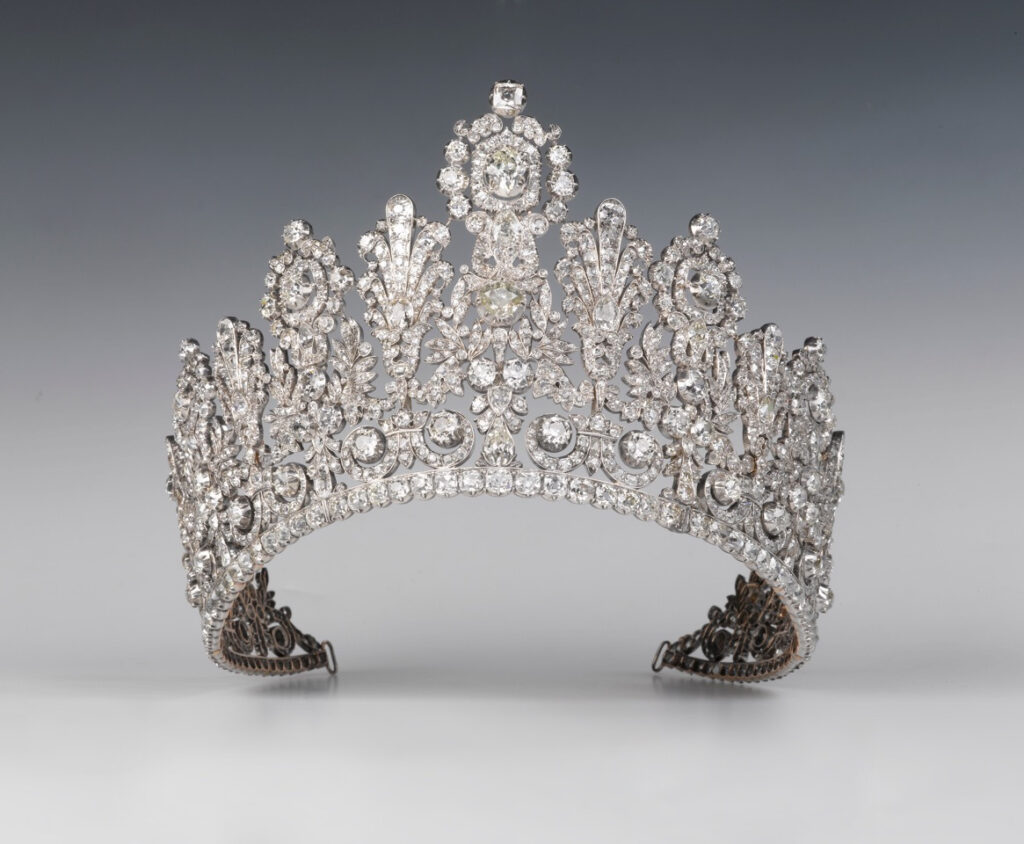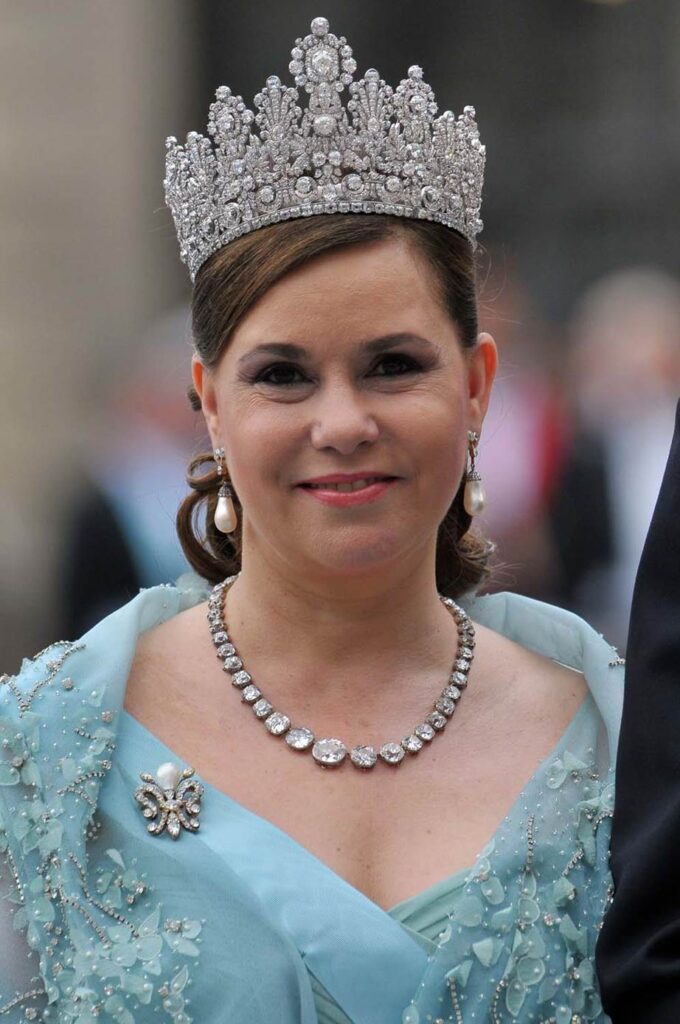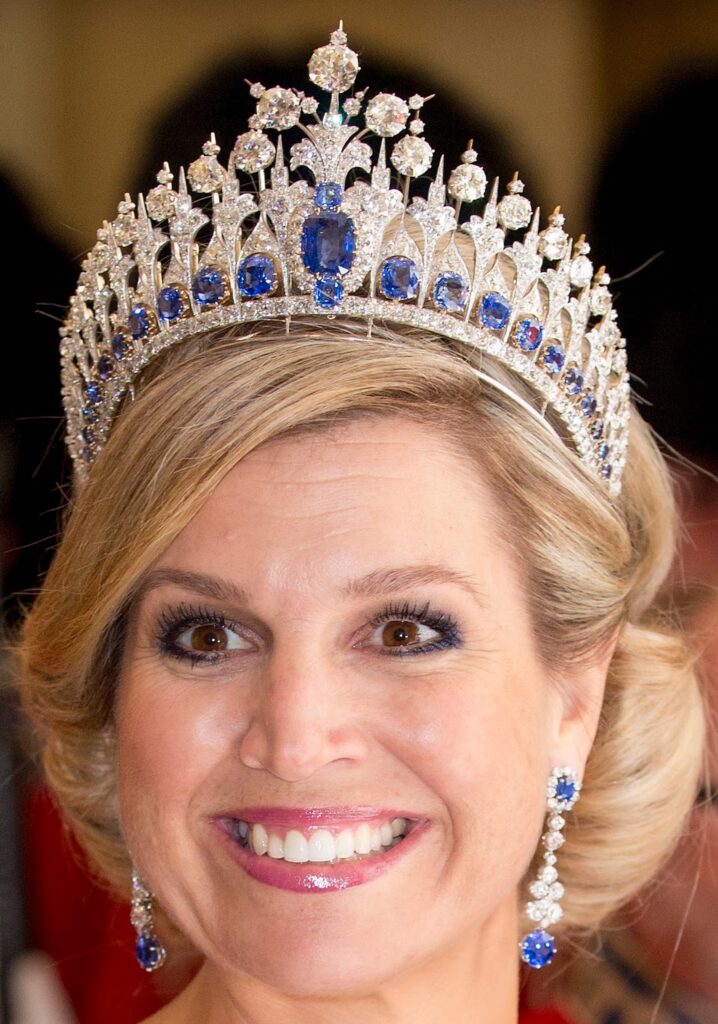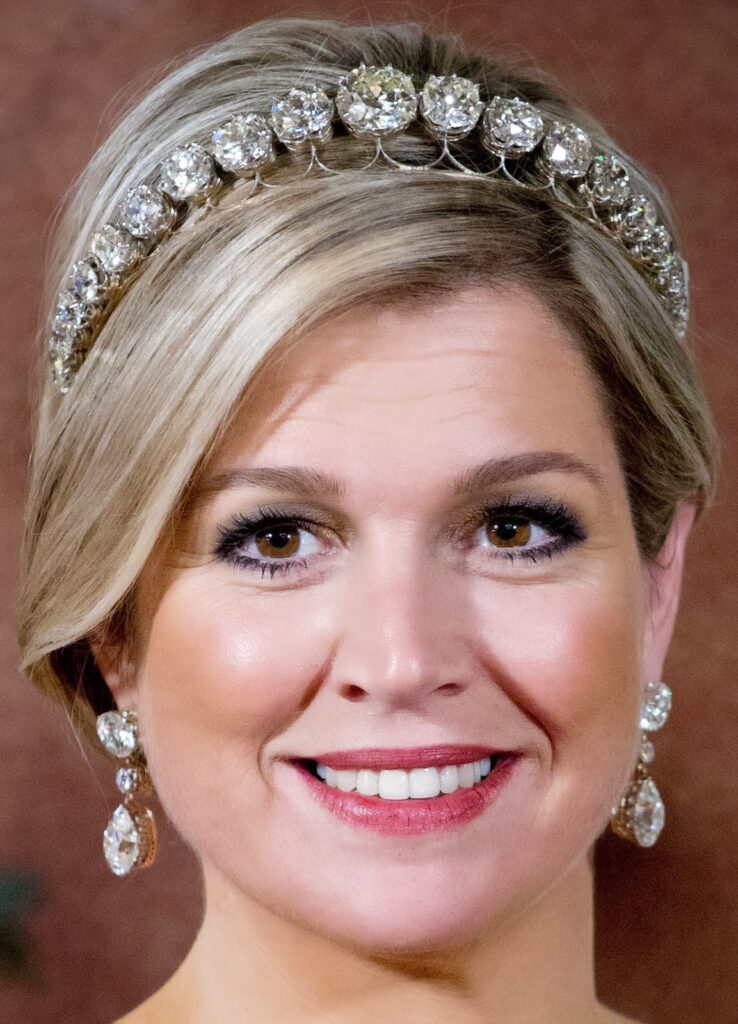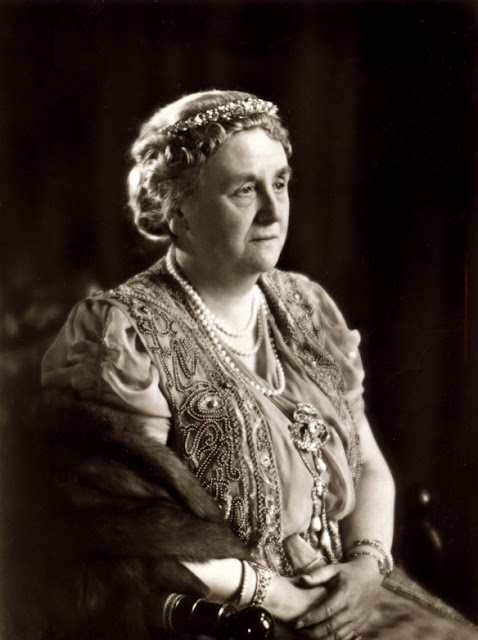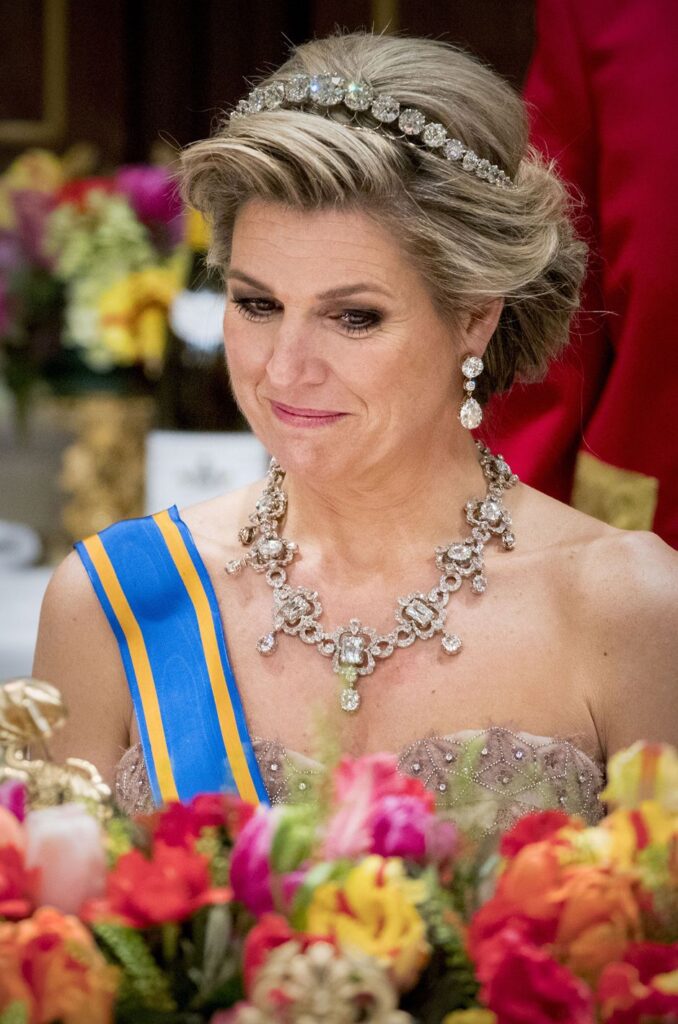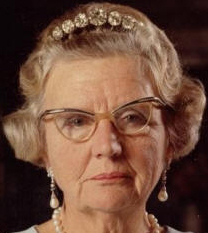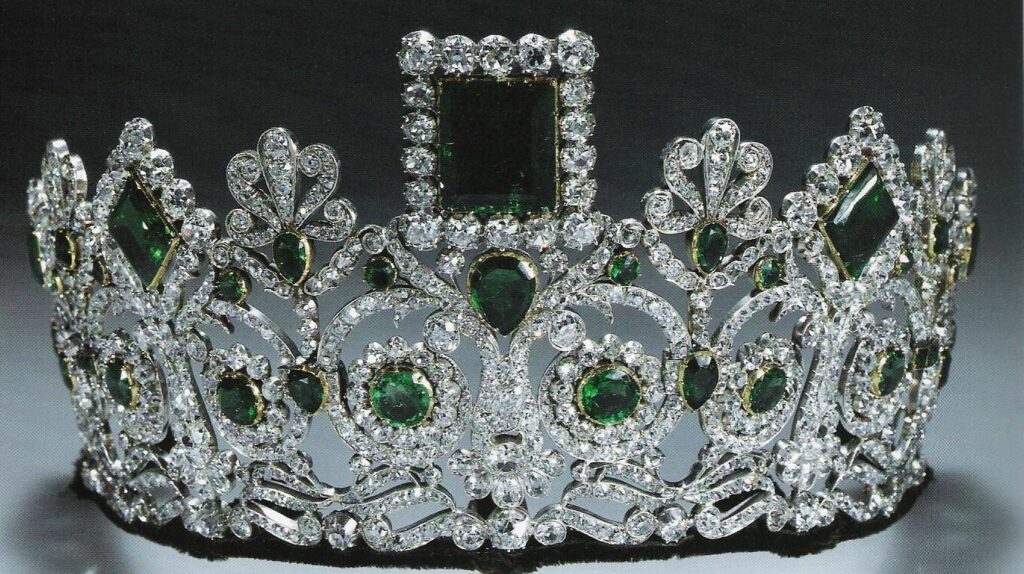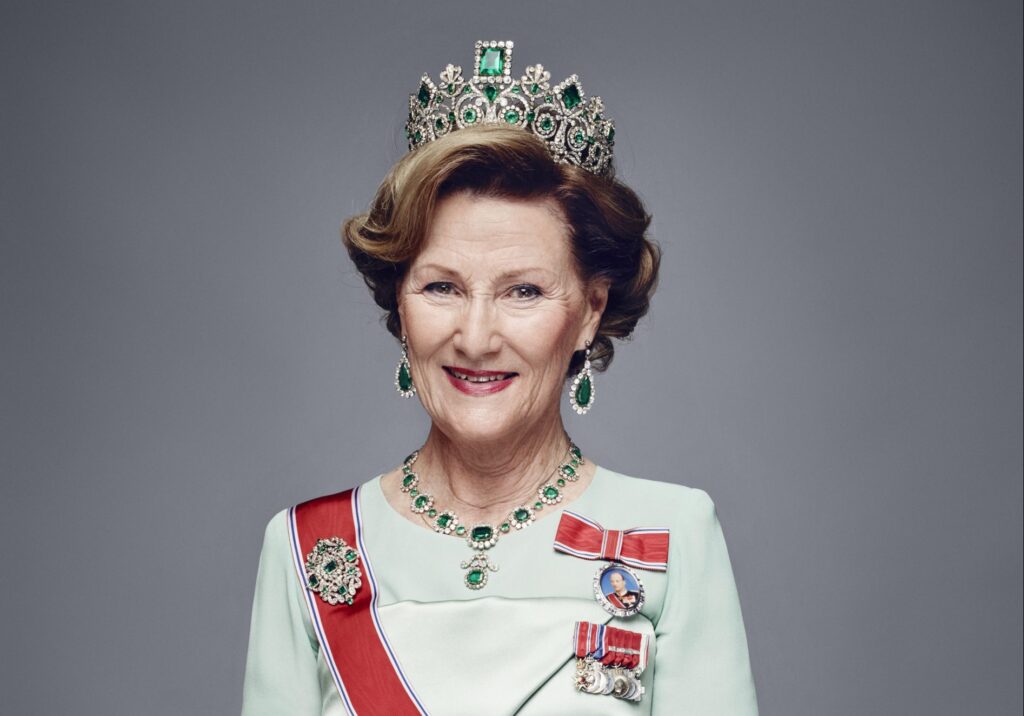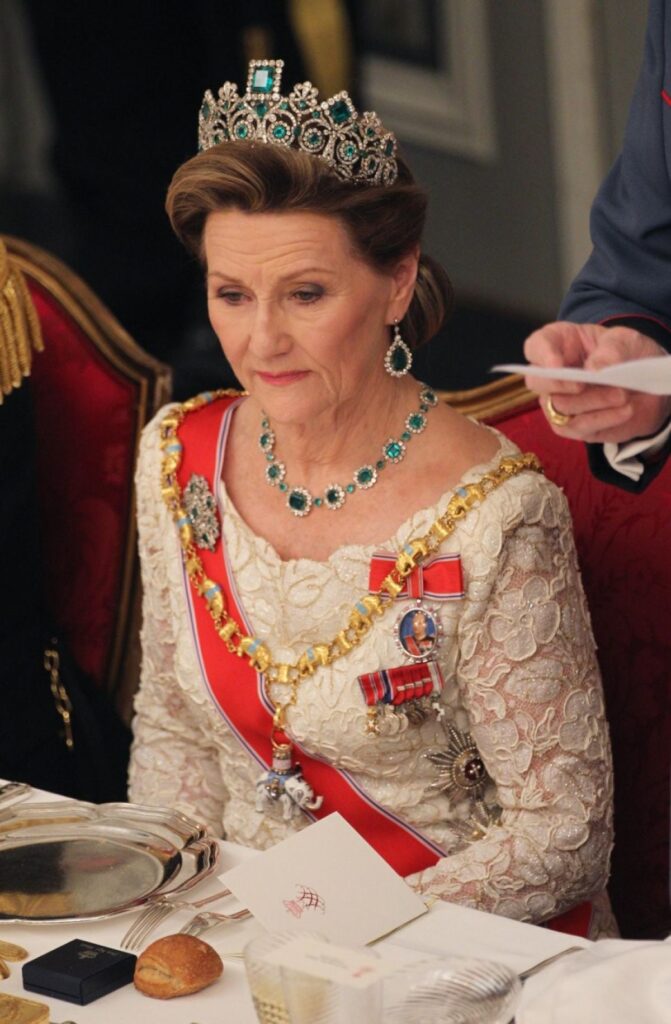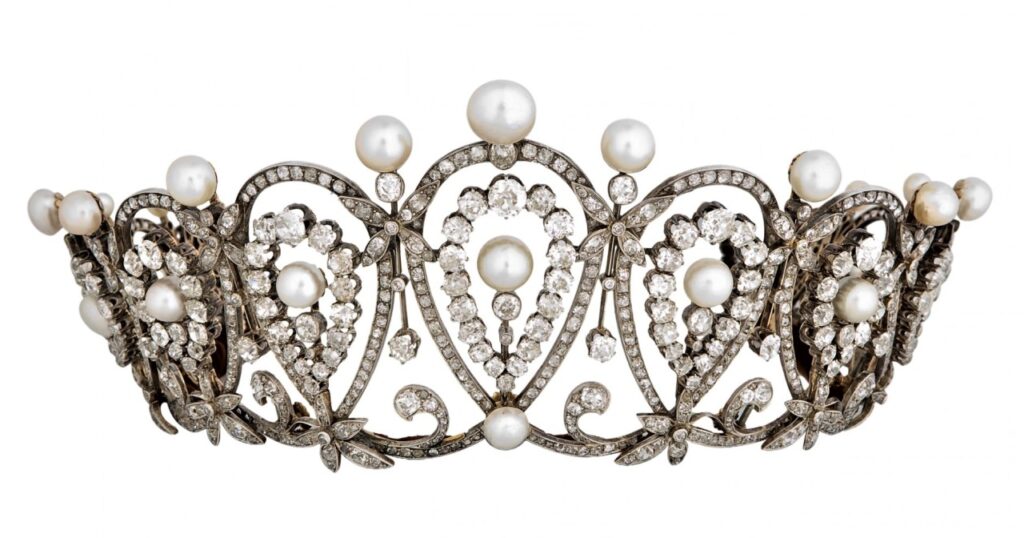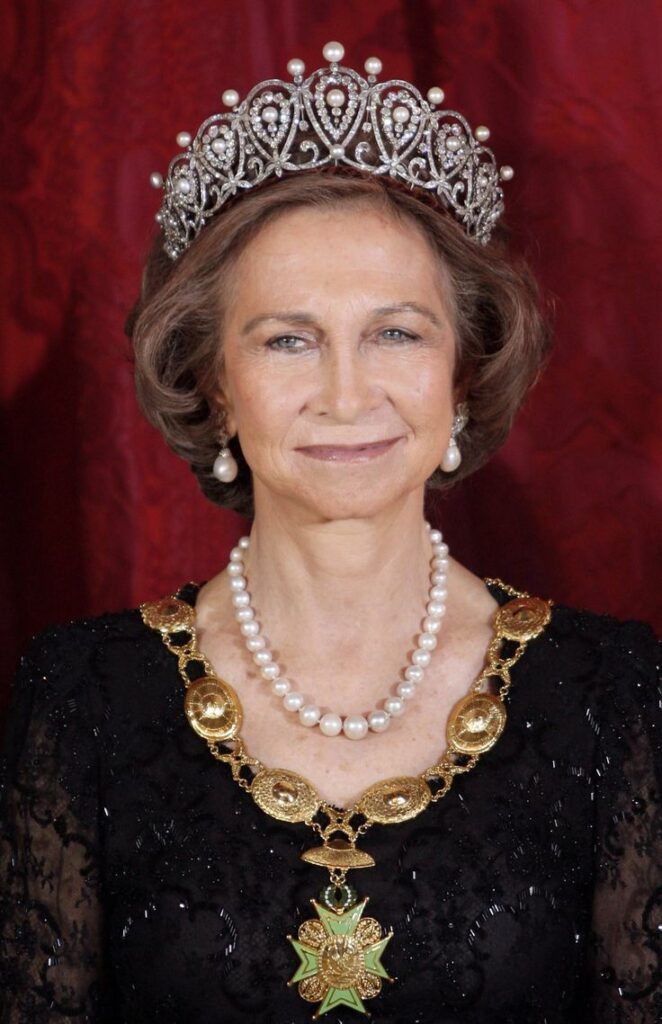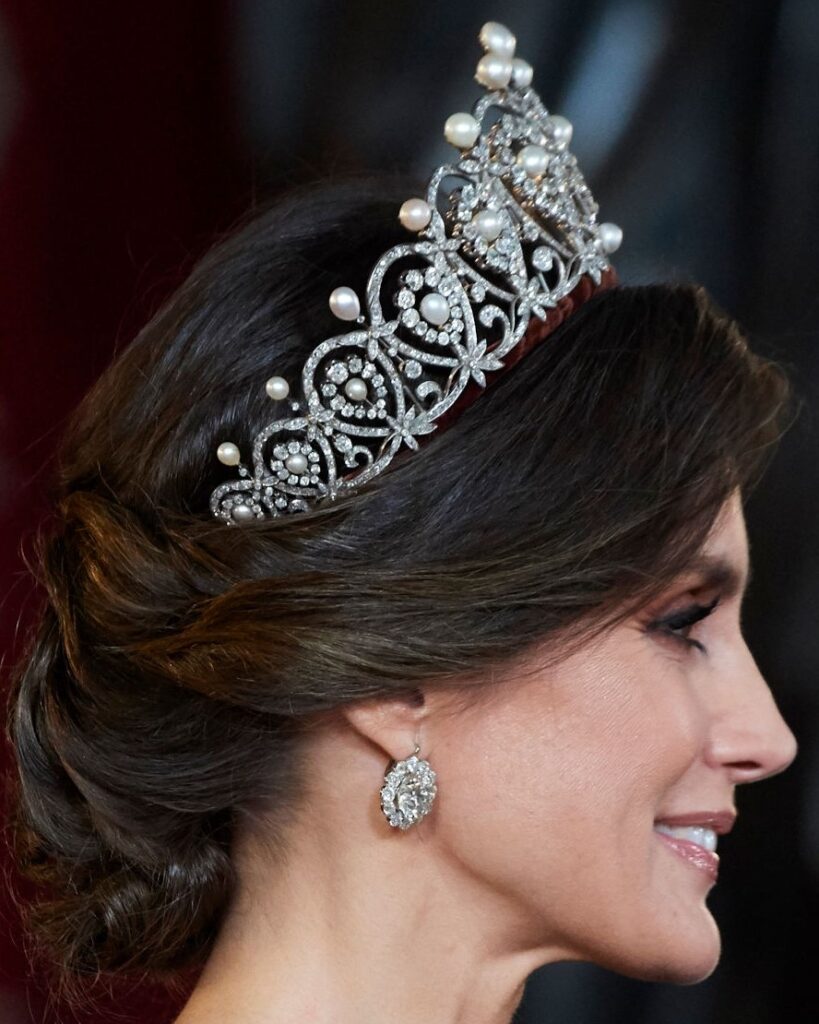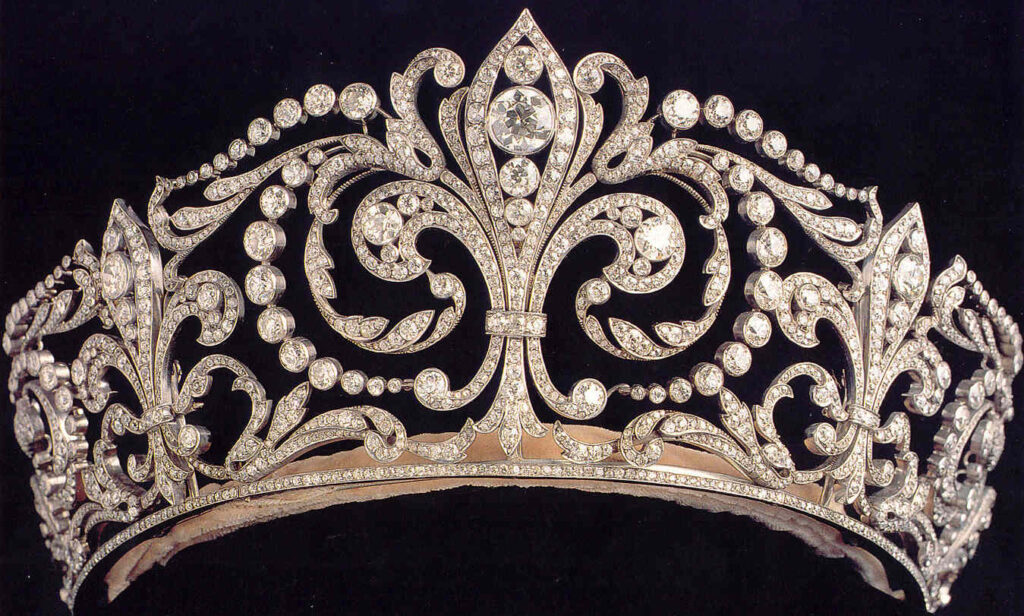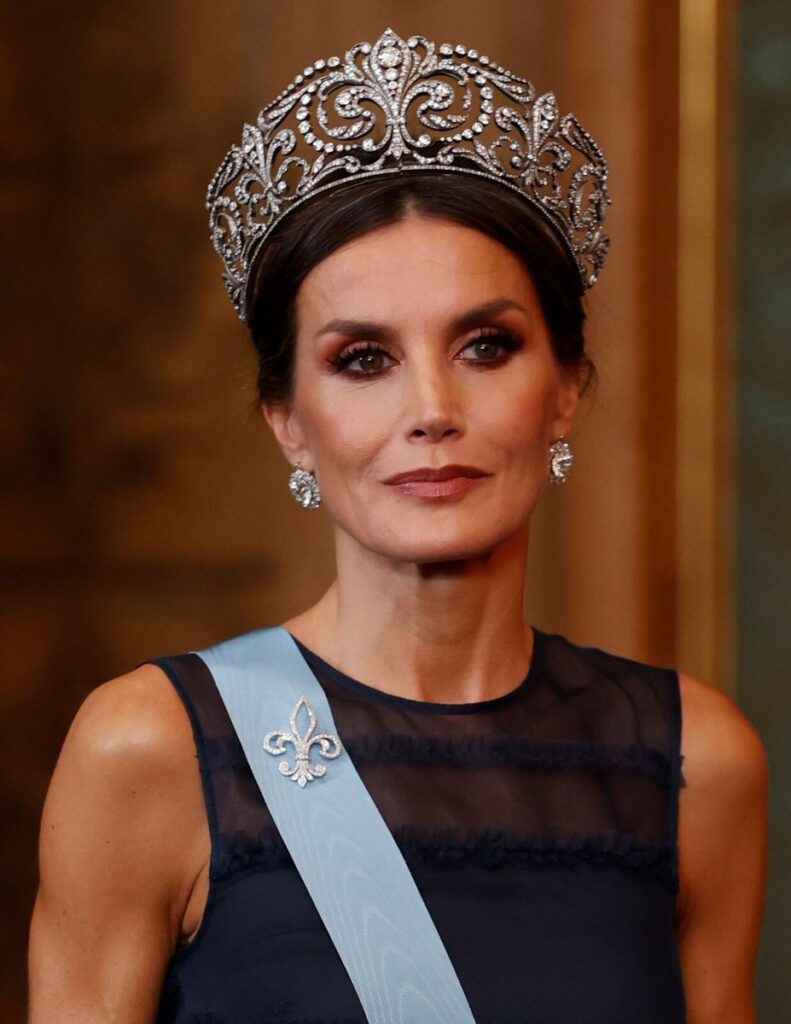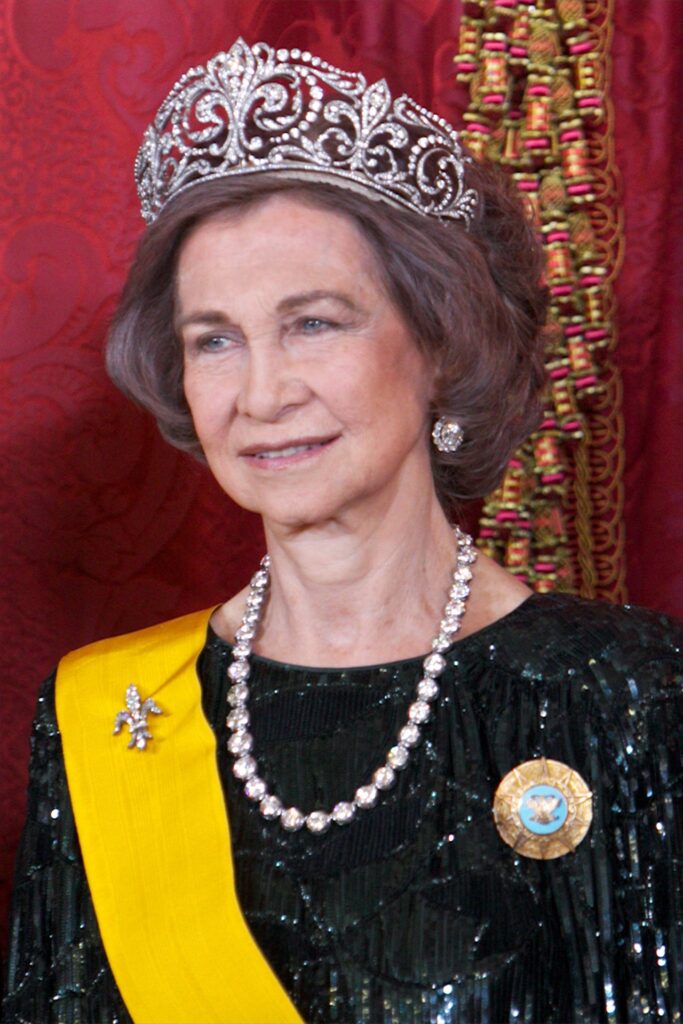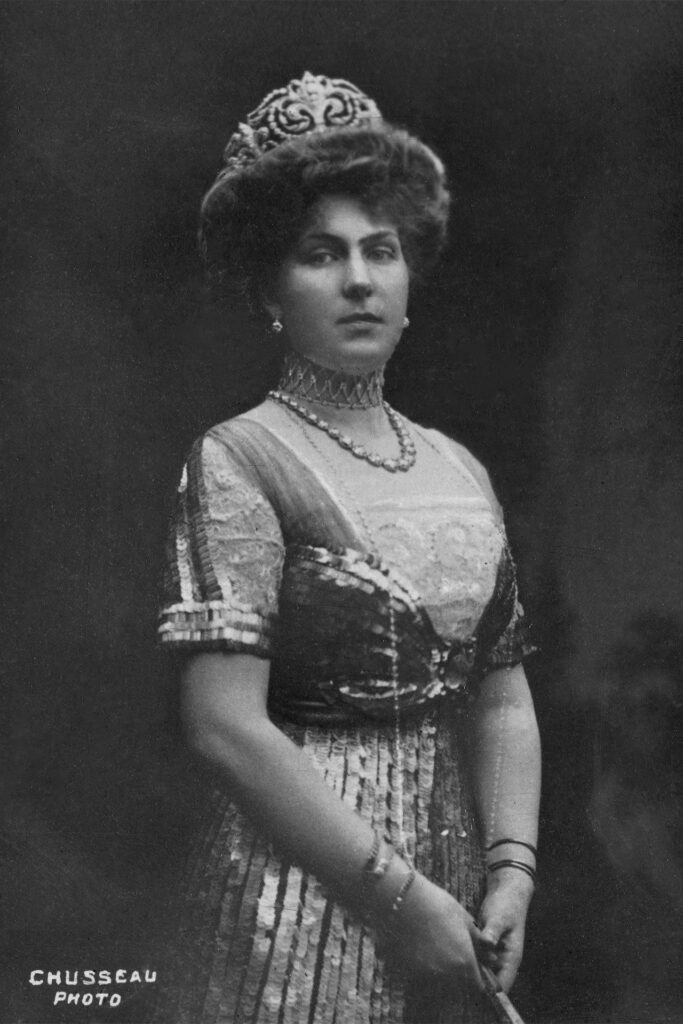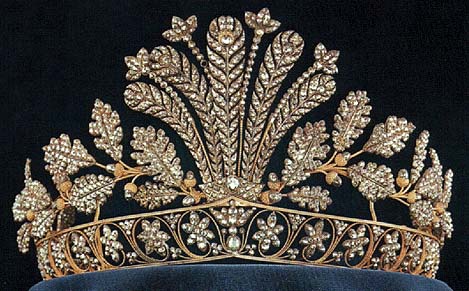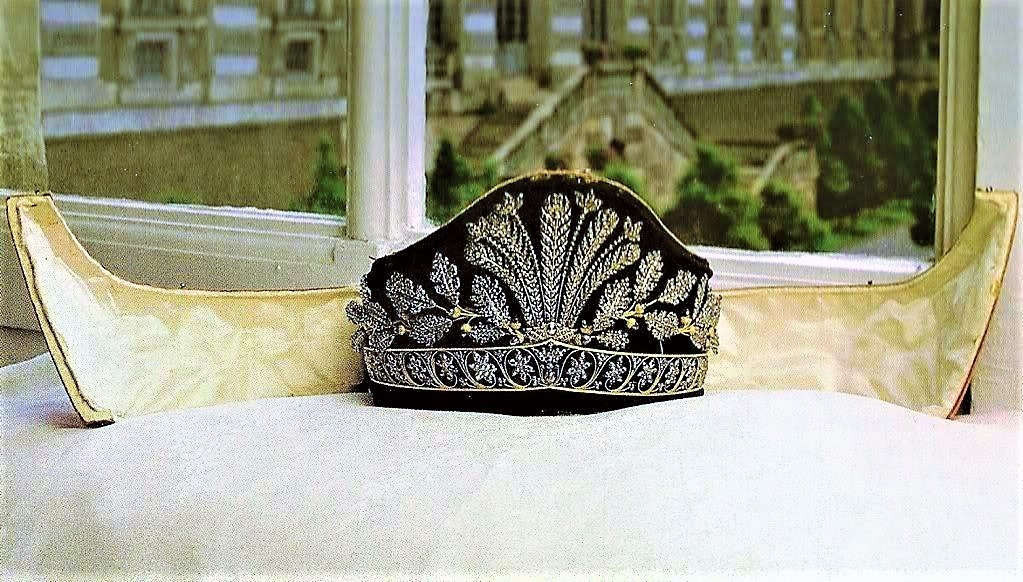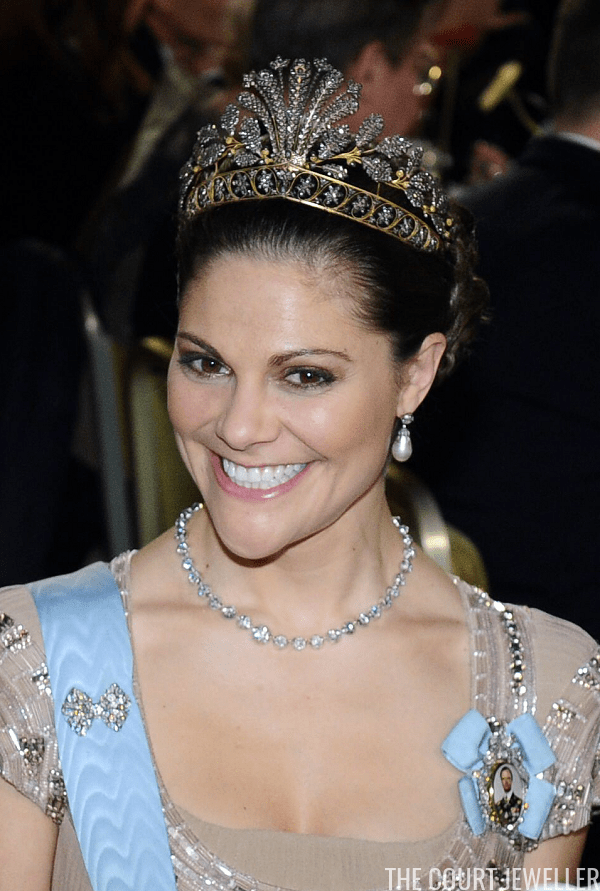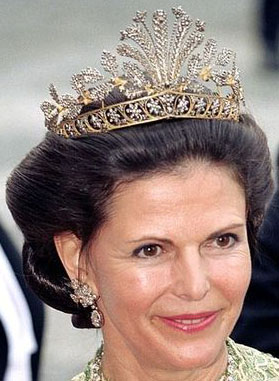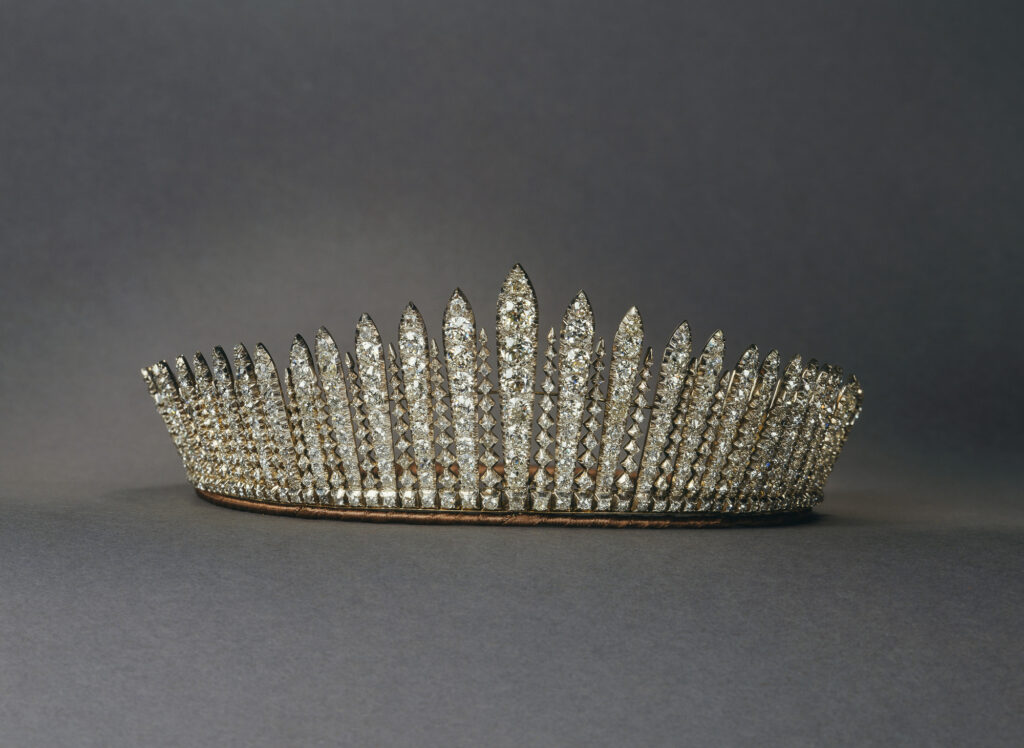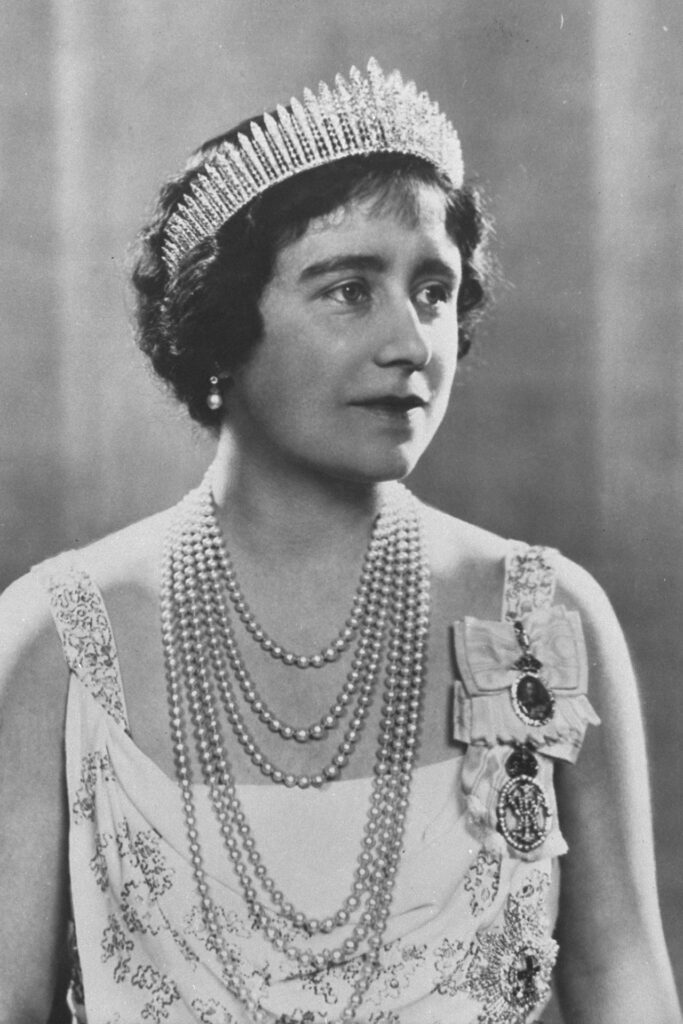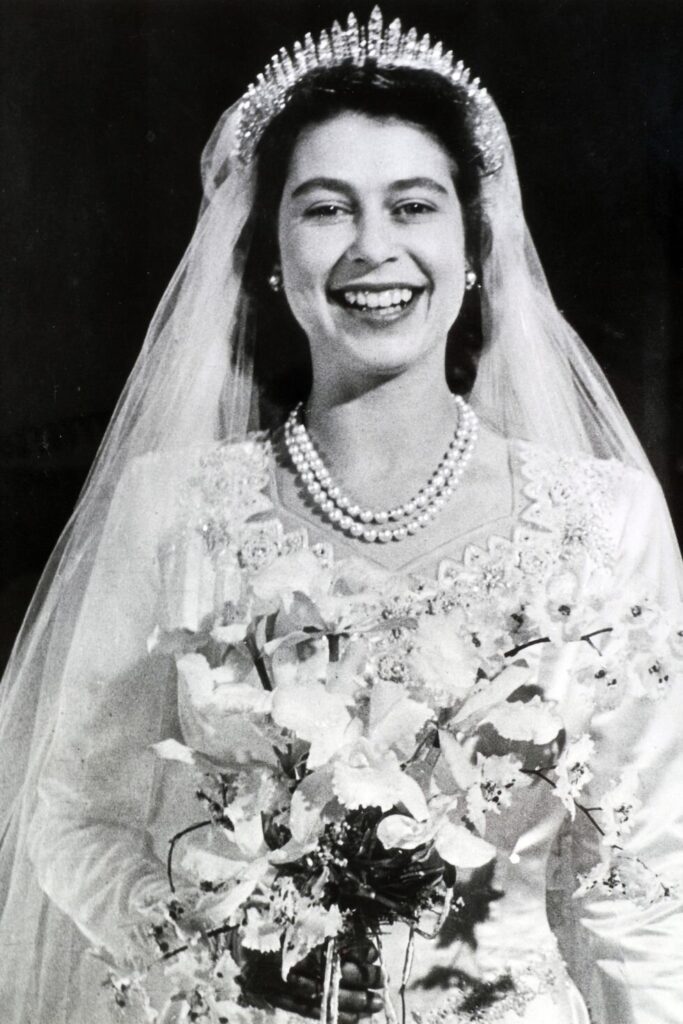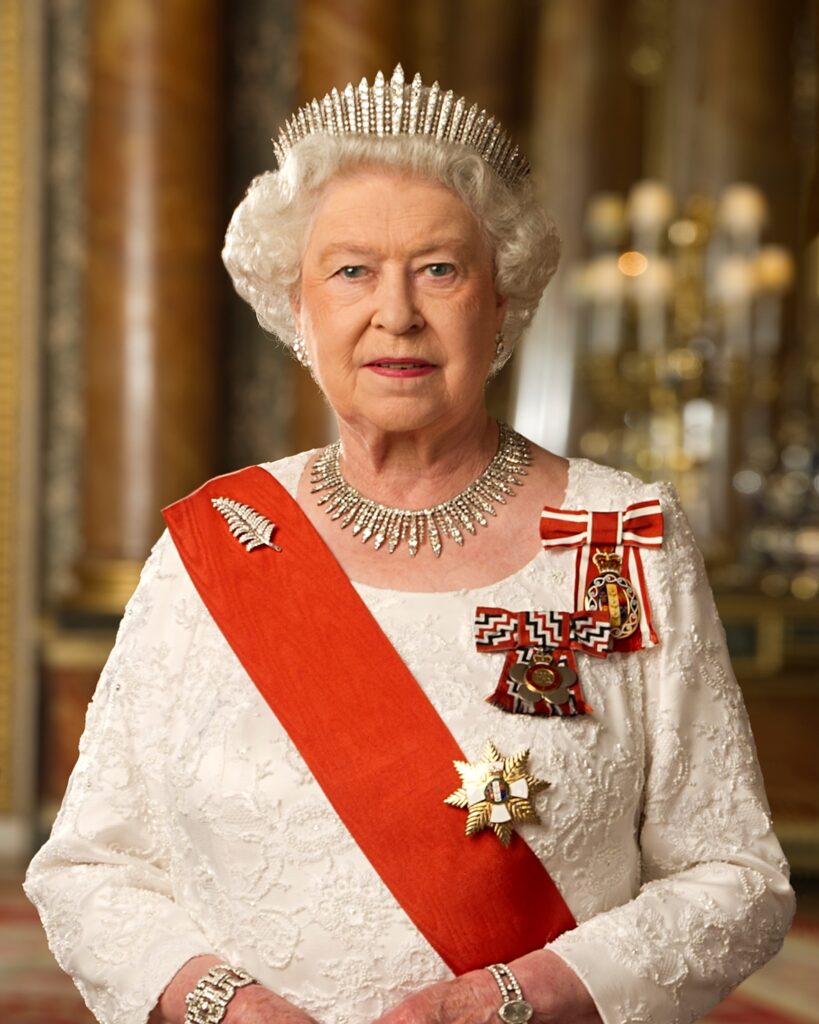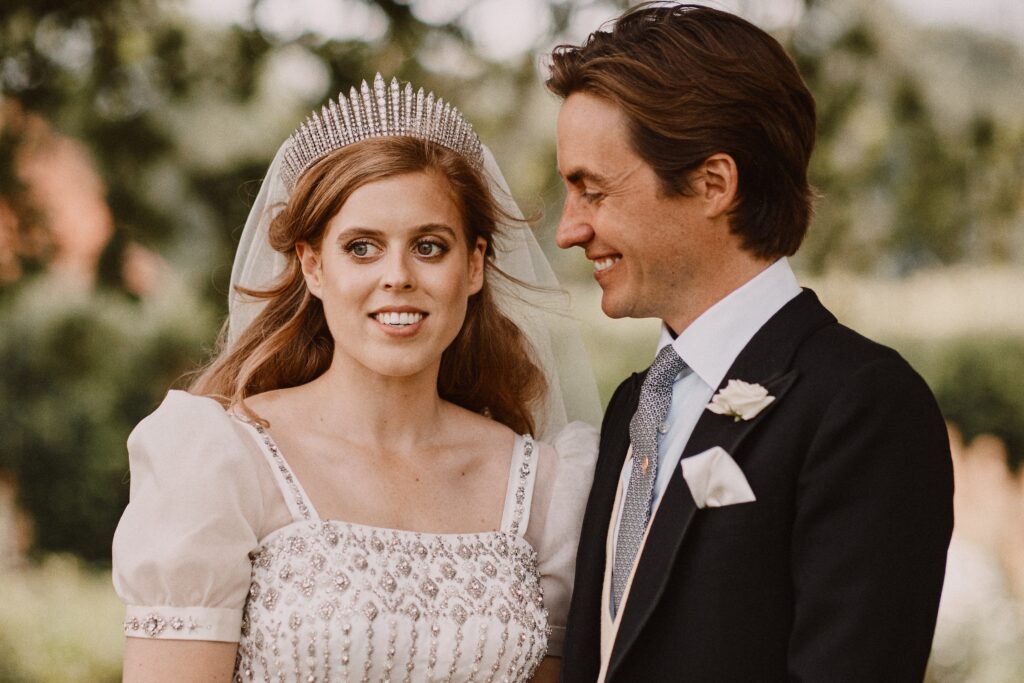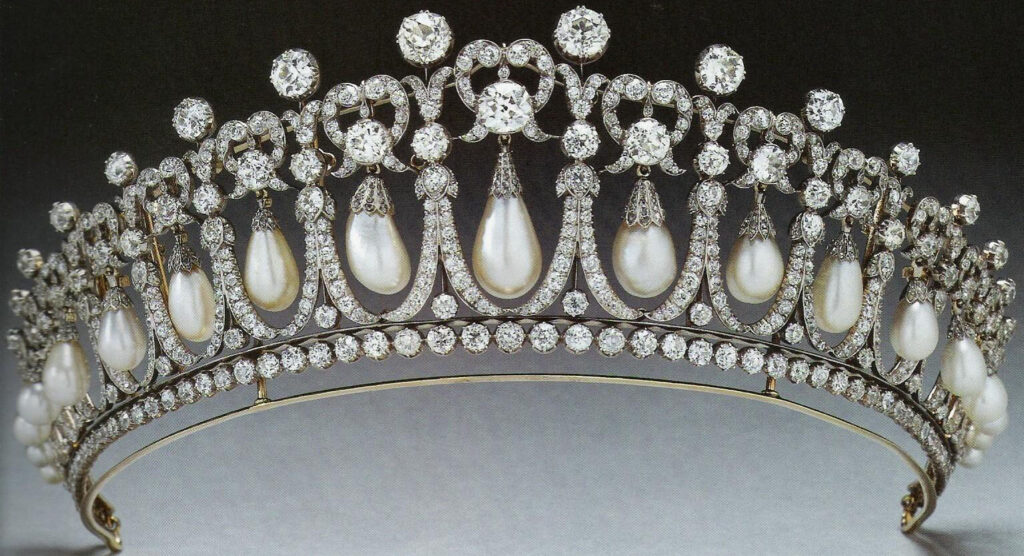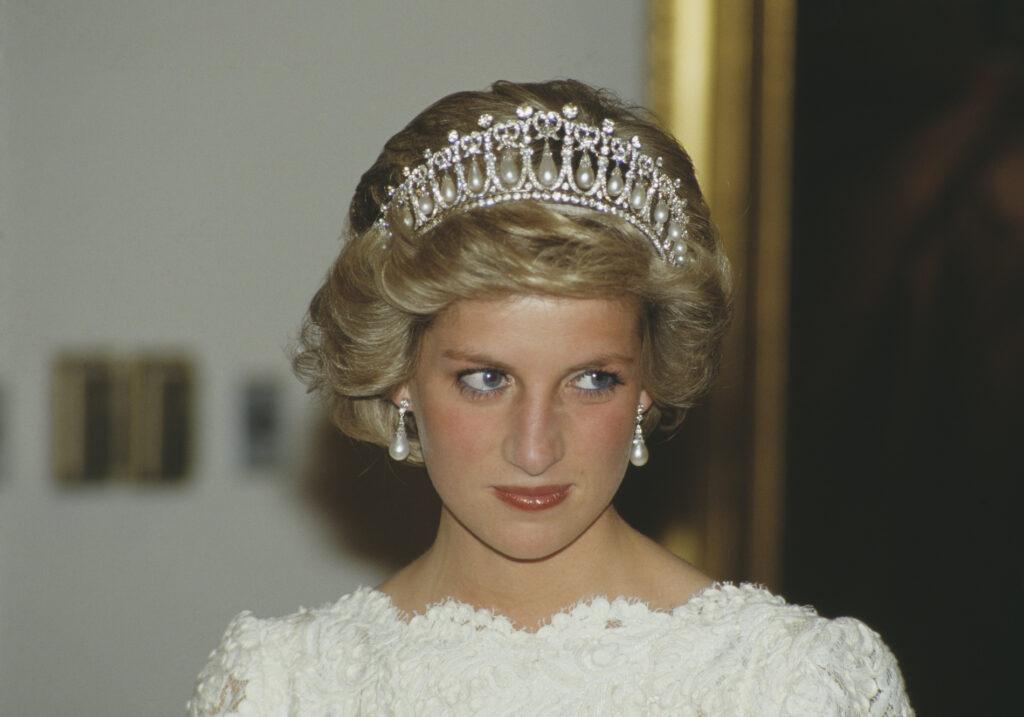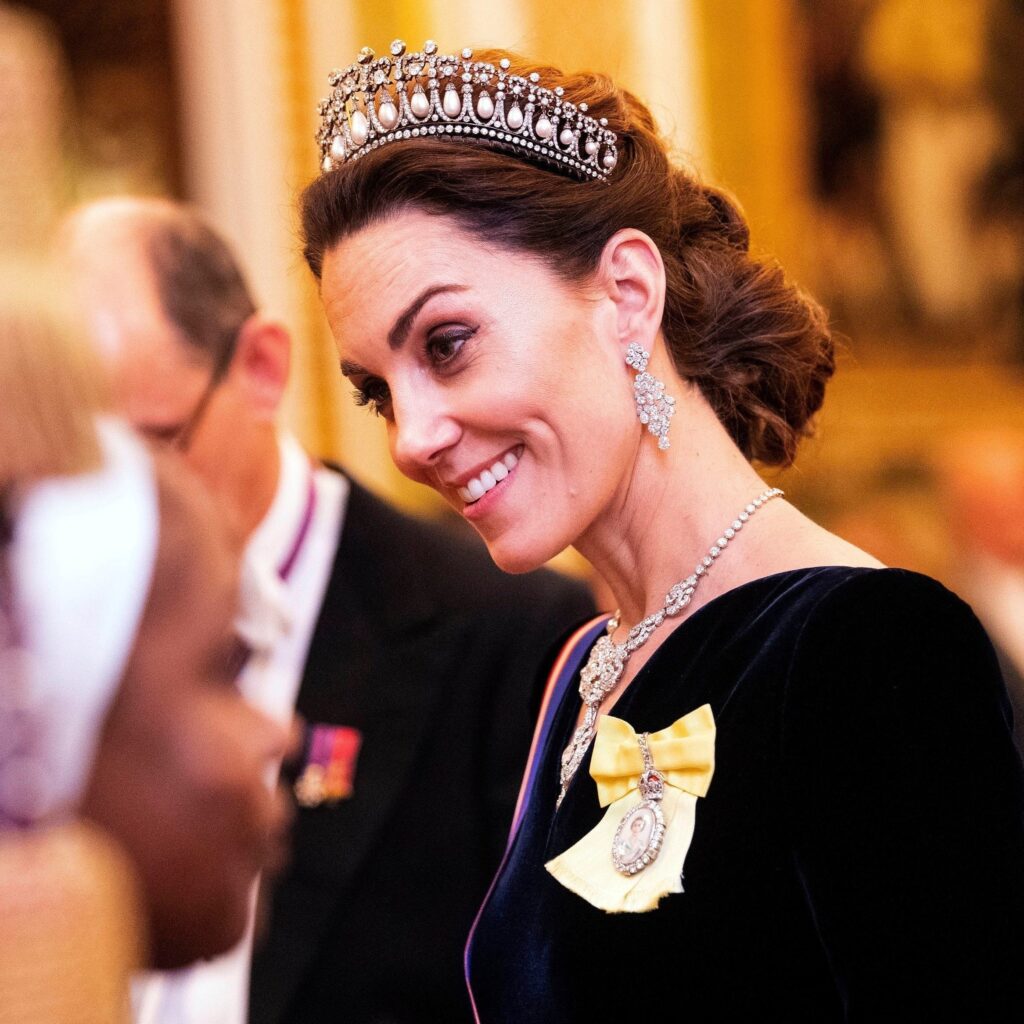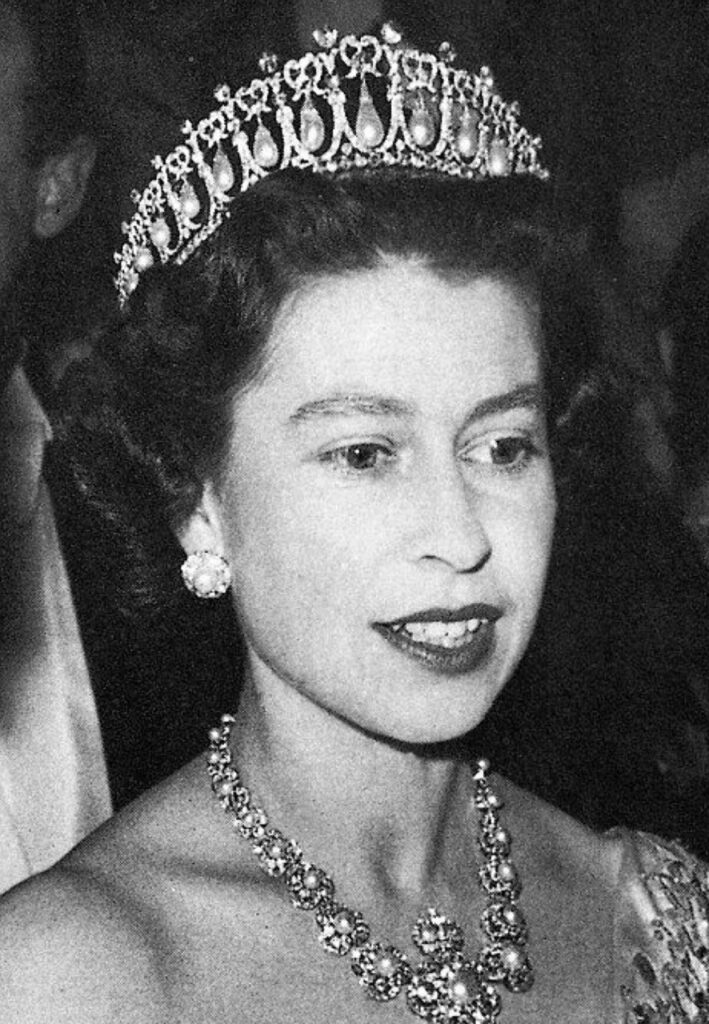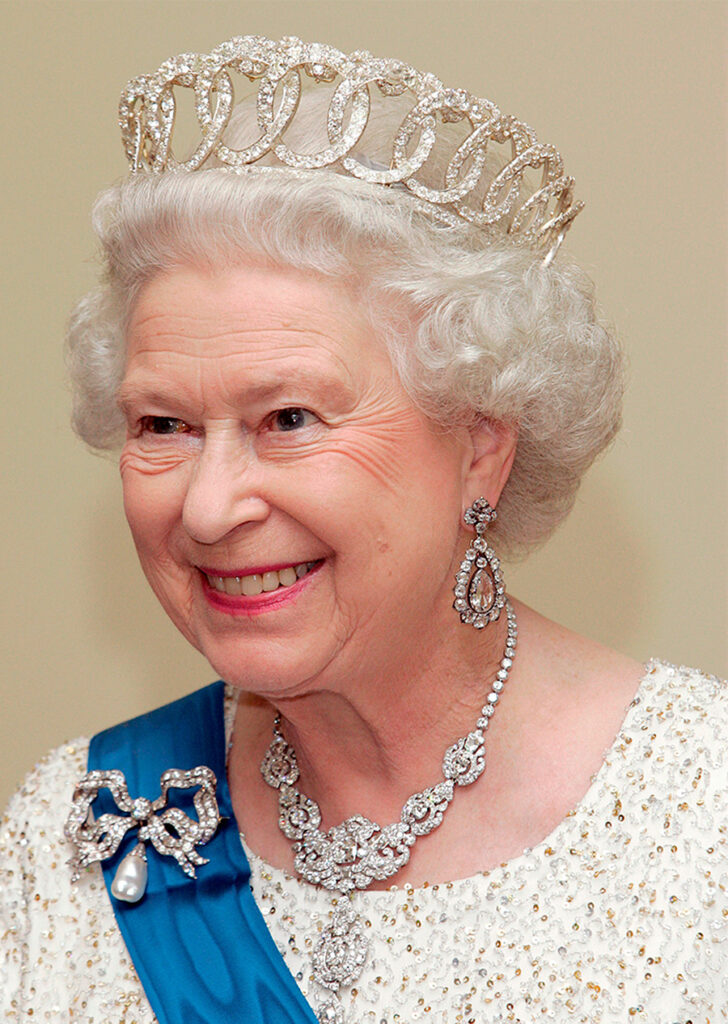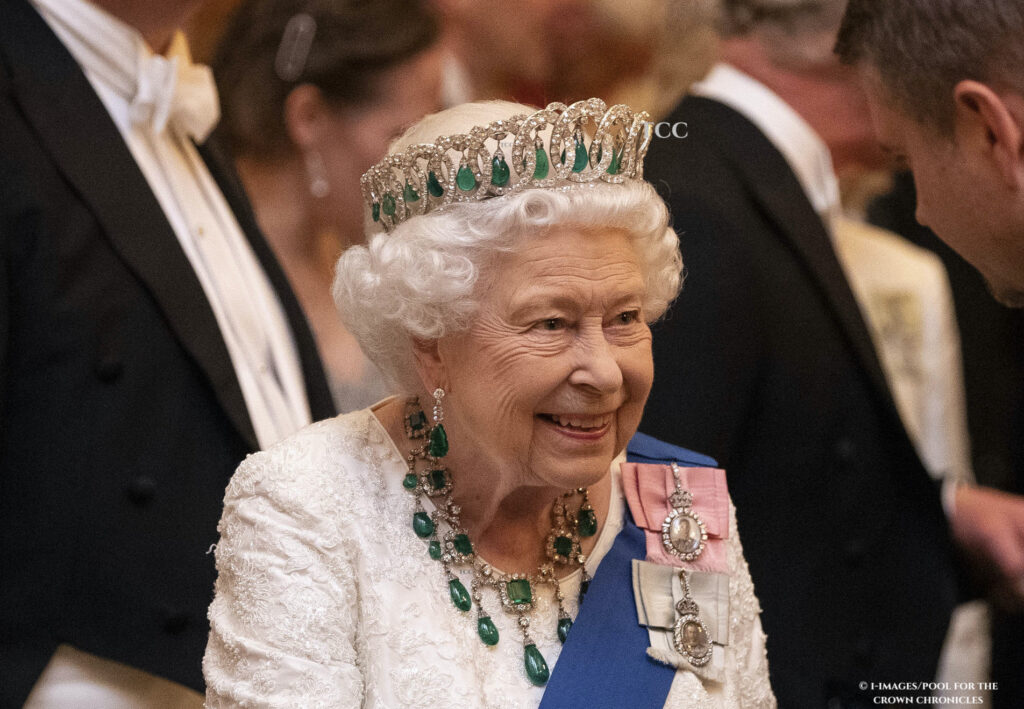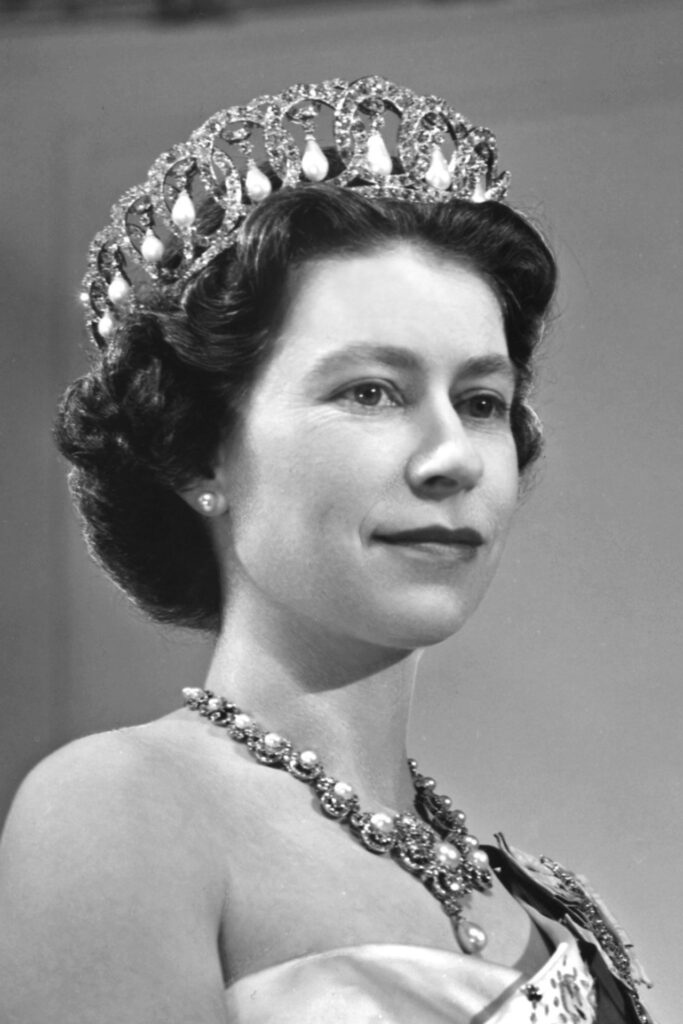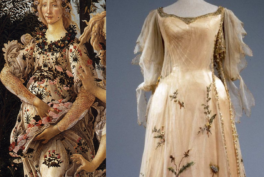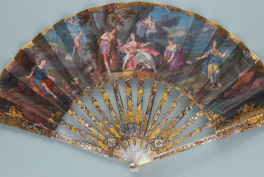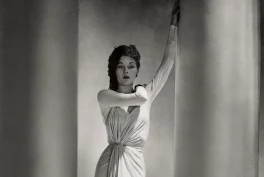Summary
- Large size tiaras from Germany, Italy and Luxembourg.
- The Dutch tiara collection is the second biggest one in the world.
- There are not only diamond tiaras but also pearl and emerald ones in Norwegian and Spanish collections.
- Spanish and Swedish royal tiaras.
- The most famous tiaras from the British royal family.
1. Bavarian Ruby and Spinel Parure – Germany
Typically beautiful tiaras are so studded with diamonds that it may even be challenging to say whether they are made of yellow or white gold. But this time we will start with an exception: the Bavarian Ruby and Spinel Tiara. Part of a parure, the tiara is designed to use the warm glimmer of yellow gold as an offset for the beautiful red of the rubies and spinels. When you look at this massive jewel you can almost feel the warmth radiating from it.
That said it doesn’t look very comfortable, the sheer size of it makes my neck ache. I can only sympathize with Princess Antonia wearing it for her portrait photo. And hope that she didn’t have to spend an entire evening in this tiara. That is certainly not one of the party ones.
The parure was made by Caspar Rieländer for King Ludwig I of Bavaria as a gift to the king’s wife, Princess Therese of Saxe-Hildburghausen. Interestingly it was the nuptials of this couple that initiated a tradition famous around the world today: Oktoberfest. Given the autumn timing of the wedding, the warm colors of the tiara make even more sense.
2. Queen Margherita’s Musy Tiara
This tiara is what you may describe as a very girly piece, with lots of flowery ornamentation and beautiful round pearls. It is now owned by Princess Marina of Savoy’s husband, Vittorio Emanuele. She was born Marina Doria, and before she married into the House of Savoy, she was a champion water skier. In 1971, she married Prince Vittorio Emanuele of Savoy, the son of the last king and queen of Italy.
In 1904, news reached Queen Margherita, the queen mother of Italy, that her daughter-in-law Queen Elena had given birth to a son. The delighted queen mother decided to celebrate her grandson’s birth with a new gem. She sent a few pieces from her existing personal jewel collection to the jeweler Musy to be crafted into a new diadem. It is one of the pieces that is very flexible, as it can be worn in eight different configurations.
When Queen Margherita died in 1926, she appropriately left this tiara to the grandson whose birth inspired its creation. Umberto presented it to his bride, Princess Marie José of Belgium, for their wedding in 1930, and she wore it for her wedding day. Umberto II and Marie José were king and queen of Italy for only a month before the monarchy was abolished in 1946; this tiara, a personal jewel, was one that went with them into exile.
3. Luxembourg Empire Tiara
Jumping to one of the smaller countries in Europe, let’s take a look at what the Luxembourg Grand Ducal vault has to offer. At 4 inches (10,16 cm) this tiara is probably the largest included in this list. It is designed for a firm believer in the “more is more” principle. This tiara gets its name from its empire style, not because it came from imperial vaults. It’s an early 19th-century piece. But its exact provenance is not clear.
There are a few theories though, one of the more recent ones proposes that the tiara was possibly acquired as a wedding gift for Pauline of Württemberg, who married Wilhelm, Duke of Nassau, in 1829. The German dukes of Nassau became the rulers of the grand duchy of Luxembourg in 1890 when Salic law prevented Queen Wilhelmina of the Netherlands from ruling. Other theories attempted to trace it back to Romanov Russia, but it now seems less likely.
4. The Dutch Sapphire Tiara
Let’s go now to the Dutch tiara collection. This piece is stunning and our first one that uses sapphires in addition to diamonds. Purchased in 1881 by King Willem III of the Netherlands for his wife, Queen Emma, the Dutch Sapphire Tiara is utterly extravagant. Featuring 33 blue sapphires and 655 diamonds, set in platinum, the tiara resembles the Gothic architecture of a great cathedral with sparkling stained glass windows. Several of the stones are also mounted en tremblant, meaning they’re attached to a trembler, to catch the light as the wearer moves. In 2013 Queen Máxima ordered Steltman Jewellers to add a new frame and lower the central element, though this option is reversible.
In the course of its history, the tiara has gained some pieces to make up a parure: a massive necklace and two enormous bracelets were added later, and a brooch also from Queen Emma’s collection is usually named as part of the parure as well.
5. Dutch Diamond Bandeau Tiara
When the tiara collections of various royal families were assessed for potential insurance, two families came on top in terms of their collection value. Unsurprisingly the British Royal family, and maybe a touch more surprisingly, the Dutch one. The two collections are pretty much equal in terms of value. And Dutch queens also make good use of their vast selection of tiaras.
The Dutch Diamond Bandeau Tiara is deceptive in its simplicity. There is no contrived construction or tremblers in the ornamentation, but what we get is the classic simplicity of a row of massive diamonds. And what else would you need with the stones of this class?
The tiara was originally a diamond collet necklace that was a wedding gift to Queen Emma, née Princess Emma of Waldeck and Pyrmont, who married King Willem III in 1879; the diamonds themselves date back even further. The strand of diamonds was used as both a necklace and a dress ornament before it was converted into a tiara. The tiara was seen as early as 1937 on the future Queen Juliana, who was Queen Emma’s granddaughter. Juliana’s mother, Queen Wilhelmina, also wore it.
6. Empress Joséphine’s Emerald Tiara
Staying with smaller countries we will now visit Norway. This tiara will add some more color, as it is decorated with emeralds in addition to diamonds. It originates with Empress Joséphine, first wife of Napoléon Bonaparte. It was made for her by the French jeweler Bapst and is part of a parure that today includes a necklace, earrings, and two brooches. As you will see in the gallery, Queen Sonja happily uses the whole set.
The tiara went through multiple royal hands and was passed within families, as well as through multiple marriages, so I will spare you the details of how it got from France to Norway. It certainly became a favorite of Queen Sonja and she wore it on many occasions, often proving that emeralds really go with anything.
7. Queen Maria’s Cartier Loop Tiara
Interestingly, the Spanish royal family comes only sixth in the tiara collection race. Made of diamonds and pearls set in platinum and reportedly made by Cartier, this large tiara was a wedding present to Archduchess Maria Christina of Austria (1858-1929) for her 1879 wedding to King Alfonso XII of Spain. The tiara then changed hands quite frequently but has always remained in the hands of the Spanish royal family. Despite the country’s troubled history, the family managed to hang on to the piece because it has always been considered private property and not a part of the official royal jewels collection.
8. Fleur de Lys Tiara
This is probably the best-known Spanish royal family tiara. Made in 1906 by the royal jeweler Ansorena, it was a wedding gift from King Alfonso XIII of Spain for his bride, Princess Victoria Eugenie of Battenberg, the granddaughter of Queen Victoria and Prince Albert. Sadly the day turned out to be more dramatic than romantic, as the marriage was unpopular with the anarchists. A bunch of flowers was thrown at the couple’s carriage which concealed a bomb, killing and injuring over 100 people – leaving the new queen’s wedding dress splattered with blood.
Just like the Cartier Loop Tiara, this item was included in the personal possessions of Queen Eugenie. Her will and final testament from 1963 included instructions which demanded that a small group of her regal pieces never leave the family but are simply passed from monarch to monarch. In 1953 the tiara was worn by the countess of Barcelona for the coronation of Queen Elizabeth II. In 1978, as per Princess Eugenie’s wishes, it was returned to the new Queen Sofia, wife of her grandson, Juan Carlos de Bourbon. Later when Juan Carlos abdicated as per his grandmother’s wishes the jewels were passed on to the new king, Felipe, and his wife Letizia.
9. Napoleonic Cut-Steel Tiara
Since we’re hopping around Europe the time has come to visit Sweden. This tiara is interesting because unlike every other one in this article, it does not have a single gemstone in it. It is made of steel that has been strategically cut, polished, and set in gold. Thanks to this inventive design it does not lack the sparkle. The tiara is said to have been made for Empress Joséphine’s daughter, Hortense de Beauharnais. Beauharnais had no daughters, and it’s generally believed that she gave her steel jewelry to her niece, Joséphine of Leuchtenberg. When Joséphine of Leuchtenberg married the future King Oscar I of Sweden in 1823, the steel sparkler apparently traveled with her to her new home in Stockholm.
Then, the tiara seems to have disappeared for more than a century. As the story goes: in 1976, the new queen of Sweden, Silvia, was very interested in the family’s historical jewel collection. One day, while poking about in the cabinets at the palace, she found a velvet box; inside was this tiara, forgotten and neglected for years. She had it restored and wore it, along with the matching earrings and choker, for the first time at a state visit in 1979. Since then the family is making a good use of it.
10. Queen Mary’s Fringe Tiara
The fringe tiara style was very popular among the royals. The Queen Adelaide tiara, which Queen Mary already possessed, was not as precisely graduated as she would like, additionally, it was somewhat large. Queen Mary wanted a modern version with a more even, sleek appearance, so the order was given to create this “retooled” design. These two tiaras are often confused in portraits and photographs.
The tiara was given to Queen Elizabeth, the queen-mother, and she loaned it to Princess Elizabeth, the current queen, for her wedding. But famously there was a tiara mishap at the royal wedding of the future queen and Prince Philip. When the tiara was placed on the bride’s head, it snapped and had to be quickly mended by a jeweler from Garrard before she could leave for Westminster Abbey. The queen mother, reportedly, remained calm as ever, saying: “We have two hours and there are other tiaras.” The tiara was “something borrowed”, and later played that same role in Princess Anne’s wedding.
11. The Cambridge Lover’s Knot Tiara
The “Cambridge” part of the name is a reference to the fact that this tiara is not an original; in 1913, Queen Mary had E. Wolff & Co. and Garrard made a copy of a lover’s knot tiara once owned by her grandmother, Augusta, Duchess of Cambridge. The 1818 tiara had a very Gothic late-Georgian design aesthetic and that influence is evident in the motifs and swags in the updated model.
Originally the Lover’s Knot Tiara was decorated with numerous pearls repurposed from several historical sources. Many of those pearls were removed resulting in a more streamlined design than was originally intended. The tiara passed to Queen Elizabeth II in 1953 upon the death of her grandmother and was subsequently worn by Diana, Princess of Wales, on many occasions. It remains popular with the younger generation, worn often for official occasions by, fittingly, the Duchess of Cambridge.
12. The Vladimir Tiara
The Vladimir Tiara takes its name from the fact that it was made for Grand Duchess Maria Pavlovna, wife of Grand Duke Vladimir. It was smuggled out of Russia during the Revolution and eventually purchased by Queen Mary. Made by Bolin around 1874, the tiara has undergone many renovations and a complete reconstruction (originally it was gold and now it is platinum). Queen Mary added the Cambridge emeralds as detachable pendants, interchangeable with the original pearl pendants, making it more versatile. The tiara remains popular with Queen Elizabeth II, probably thanks to the timeless simplicity of the design coupled with flexibility added by the detachable pendants.
This was a subjective selection of some of the more famous tiaras. If you could have any of them which one would be your choice? And more importantly what occasions would you wear it for? When do you take out your most extravagant jewelry and let it shine? Should we do it more often? In the end, life is for living and tiaras are for wearing.
